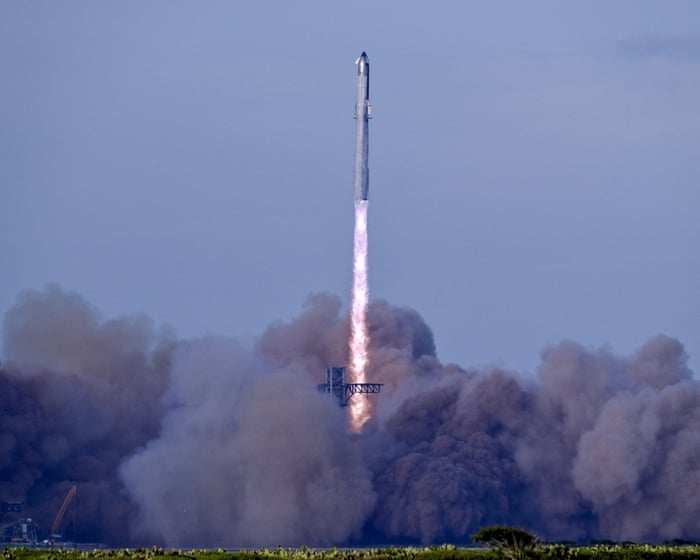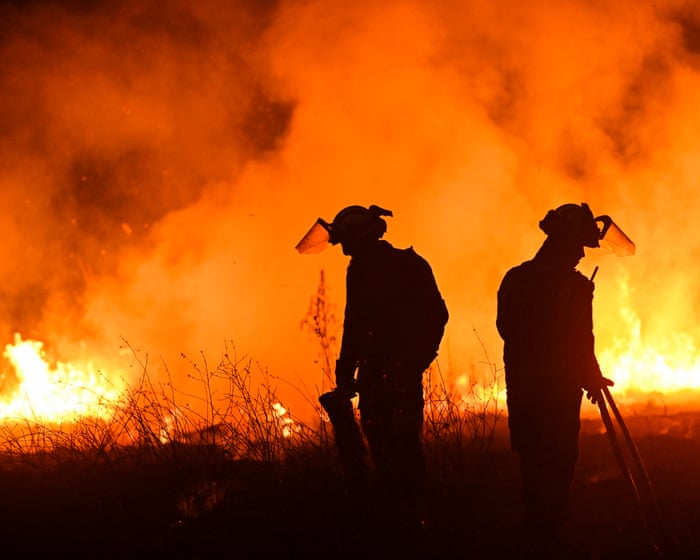On Tuesday, SpaceX’s Starship megarocket finally launched on its third attempt, after two previous scrubs in as many days. This tenth test flight proved the spacecraft had moved past earlier failures—a critical step for the reusable rocket intended for Mars missions.
The 403-foot-tall stainless steel rocket lifted off from SpaceX’s Starbase in southern Texas at 6:30 p.m. local time, met by cheers from engineering teams, as shown in a live webcast. The mission aimed to test new heat shield tiles, satellite deployment capabilities, and hundreds of other upgrades from earlier versions.
The upper stage separated as planned from its Super Heavy booster, which normally returns to be caught by the launch tower’s giant arms. This time, however, the booster targeted a splashdown in the Gulf of Mexico to test an alternate landing engine setup.
Shortly after reaching space, Starship’s “Pez”-style dispenser released mock Starlink satellites for the first time—a milestone SpaceX had not achieved in previous tests. The spacecraft then endured intense heat during reentry and made a successful splashdown in the Indian Ocean, a phase that had destroyed the rocket on past flights.
This flight followed a series of explosive failures that cast doubt on whether the world’s most powerful rocket could achieve founder Elon Musk’s goals of colonizing Mars or helping NASA return astronauts to the moon.
SpaceX did not attempt to catch the booster from this flight, as it was used instead for in-flight experiments to gather performance data for future missions and unusual scenarios.
Monday’s launch was scrubbed due to weather, with thick clouds forcing a delay just 40 seconds before liftoff. Sunday’s attempt was called off because of a liquid oxygen leak at the launchpad, as Musk posted on X.
Much was at stake for this mission, given that the last three flights ended with the upper stage exploding—twice over the Caribbean and once in space. In June, an upper stage also exploded during a ground test.
“We’ve had so many tests, and it hasn’t proven itself reliable,” said Dallas Kasaboski, a space analyst at Analysys Mason. “The successes have not exceeded the failures.”
The long-term goal is to fly the upper stage—designed to eventually carry crew and cargo—halfway around the world before splashing down near northwestern Australia. Equipped with prototype heat shielding, it will deploy dummy satellites while following a trajectory that tests its rear flaps.
The Super Heavy booster is set to splash down in the Gulf of Mexico. While SpaceX has previously caught boosters with the launch tower’s “chopstick” arms, this flight focused on gathering data under less-than-ideal conditions.
This year, two Starship tests failed early in flight, another failed in space on the ninth flight, and a ground test stand exploded in June, destroying a Starship and scattering debris into nearby Mexican territory. These incidents tested SpaceX’s high-risk development approach, where new prototypes are flown to their limits.
This strategy differs from rivals like Jeff Bezos’s Blue Origin, whose New Glenn rocket debuted in January after years of ground testing. Similarly, United Launch Alliance’s Vulcan rocket had a long development period before its 2024 debut.
Despite recent setbacks, Starship is not considered to be at a crisis point. SpaceX’s “fail fast, learn fast” philosophy has already shown results.SpaceX has taken a commanding lead in rocket launches with its Falcon fleet, while Dragon capsules transport astronauts to the International Space Station, and Starlink has grown into a geopolitical asset.
However, Starship introduces new challenges. Elon Musk has said that creating a fully reusable orbital heat shield is the most difficult task, pointing out that the space shuttle’s heat shield required nine months of refurbishment between flights.
“With Starship, we’re aiming for a heat shield that can be reused almost immediately,” he explained during a webcast on Monday.
SpaceX’s Starlink satellite internet service, a key revenue source, also depends on Starship’s success. Musk plans to use Starship to launch larger groups of Starlink satellites, which are currently deployed by the Falcon 9 rocket.
Musk remains optimistic. “In about six or seven years, there will be days when Starship launches more than 24 times within 24 hours,” he posted on Sunday in response to a user on X.
Another challenge is demonstrating that Starship can be refueled in orbit using super-cooled propellant—a critical but unproven step for deep-space missions.
Time is running short to prepare a modified version of Starship for NASA’s lunar lander mission by 2027, and for Musk to fulfill his promise of sending an uncrewed Starship to Mars next year.
Frequently Asked Questions
Of course Here is a list of FAQs about the Starship launch designed to be clear and helpful for all levels of interest
General Beginner Questions
Q What is Starship
A Its a massive fully reusable rocket and spacecraft system being developed by SpaceX Its designed to carry both crew and cargo to Earth orbit the Moon Mars and beyond
Q Why was this launch such a big deal
A It was the first time SpaceXs fully stacked Starship successfully launched and completed most of its test flight objectives after several previous attempts ended in explosions
Q Was this launch a complete success
A It was a major success for a test flight The main goals were to get off the launch pad and gather data Both stages fired successfully and the spacecraft reached space However both the booster and the spacecraft were lost during attempted landings which was expected for this early test
Q How big is Starship compared to other rockets
A Its the largest and most powerful rocket ever built When fully stacked its about 400 feet talltaller than the Statue of Libertyand its Super Heavy booster produces about twice the thrust of NASAs Saturn V moon rocket
Technical Advanced Questions
Q What does fully reusable mean
A It means both the firststage booster and the secondstage spacecraft are designed to land back on Earth after a mission be refueled and fly again This is meant to drastically reduce the cost of spaceflight like reusing an airplane
Q What is the purpose of the hotstaging separation we saw
A Hotstaging is when the upperstage engines ignite before the stages fully separate This allows for a smoother more efficient transition in the vacuum of space and helps push the spent booster away
Q Why did the booster explode after separation
A While the hotstaging was successful the booster experienced multiple engine failures during its boostback burn It lost control and was intentionally destroyed by its onboard flight termination system for safety
Q What happened to the Starship spacecraft itself
A It flew successfully for several minutes reaching space Communication was lost just before it was scheduled to reenter




